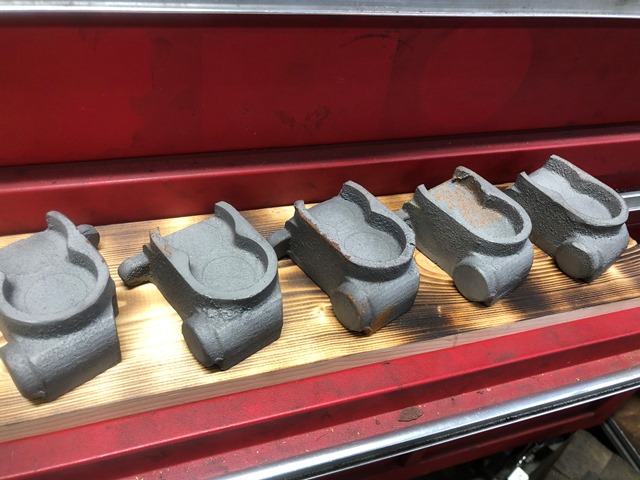m-lud
Stainless
- Joined
- Sep 4, 2016
I have my micrometer apart. It has a nice casting. I have all the gears and shafts accept the worm. It was missing.
Anyway if I was going to cast this part or have it cast.
I know I would have to add material to the flat milled surfaces so it would have material to mill it back true.
How much?
I have done some aluminum casting. Would aluminum be ok? I could get set up to do this small part.
If cast iron is needed I could have them cast.
I'm willing to take this on. I know that the gears can be bought and anybody needing one will have a lathe to make the two small shafts.. When the 10 ee is up and running I could supply the shafts also.
The micrometer is another issue. I believe it's laid out in 60 degree's. Ill look at it in the morning.
I have a couple questions here. I could google and get the answers but The knowledge here would be better
I have been thinking about this since Sneebot's steady rest. They always seem to be missing.
Edit
Rimcanyon Postings about it sort of pushed me into doing this There is a need
There is a need



Thanks Mike
Anyway if I was going to cast this part or have it cast.
I know I would have to add material to the flat milled surfaces so it would have material to mill it back true.
How much?
I have done some aluminum casting. Would aluminum be ok? I could get set up to do this small part.
If cast iron is needed I could have them cast.
I'm willing to take this on. I know that the gears can be bought and anybody needing one will have a lathe to make the two small shafts.. When the 10 ee is up and running I could supply the shafts also.
The micrometer is another issue. I believe it's laid out in 60 degree's. Ill look at it in the morning.
I have a couple questions here. I could google and get the answers but The knowledge here would be better
I have been thinking about this since Sneebot's steady rest. They always seem to be missing.
Edit
Rimcanyon Postings about it sort of pushed me into doing this
 There is a need
There is a need


Thanks Mike







